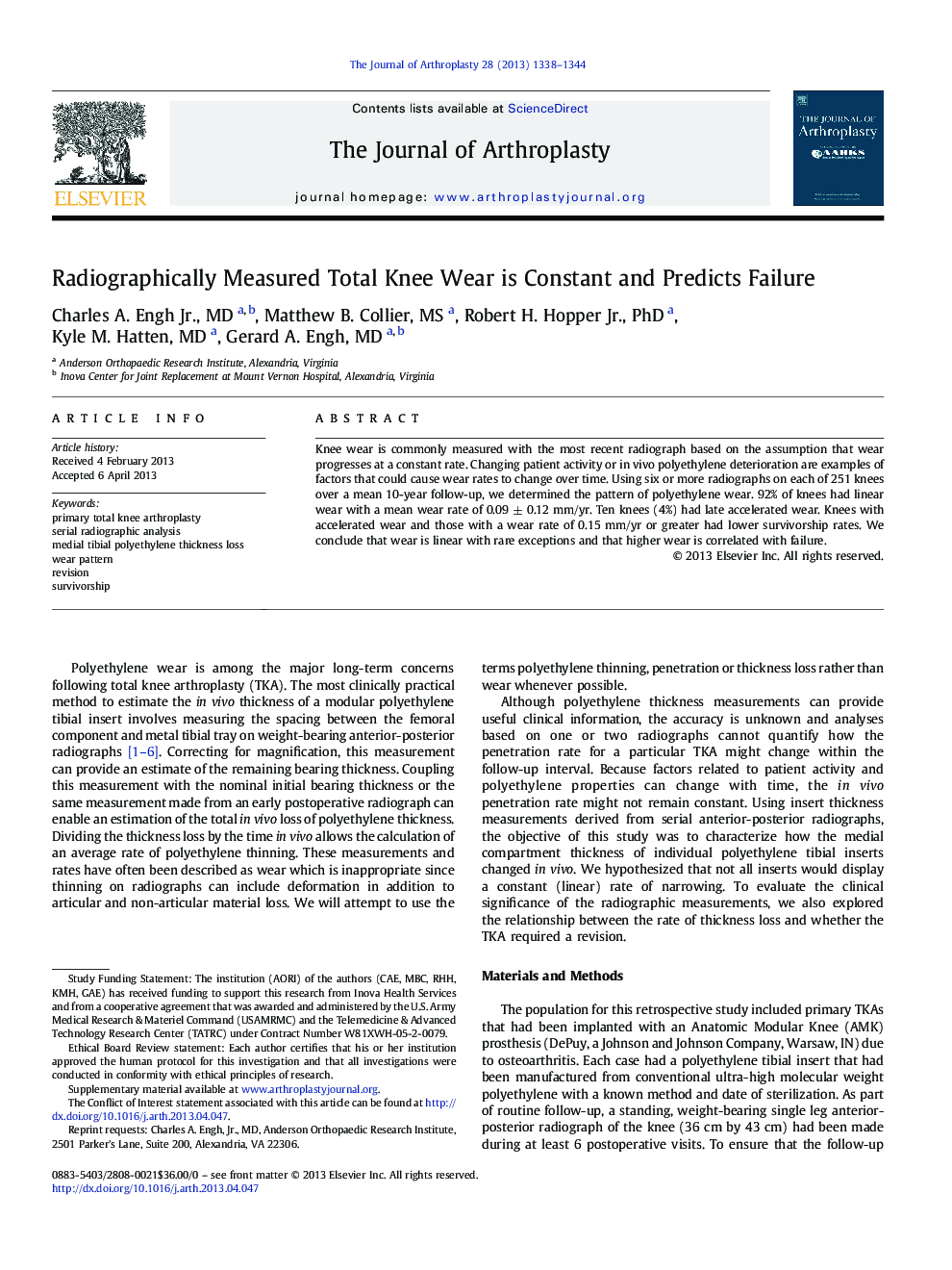| Article ID | Journal | Published Year | Pages | File Type |
|---|---|---|---|---|
| 4061082 | The Journal of Arthroplasty | 2013 | 7 Pages |
Abstract
Knee wear is commonly measured with the most recent radiograph based on the assumption that wear progresses at a constant rate. Changing patient activity or in vivo polyethylene deterioration are examples of factors that could cause wear rates to change over time. Using six or more radiographs on each of 251 knees over a mean 10-year follow-up, we determined the pattern of polyethylene wear. 92% of knees had linear wear with a mean wear rate of 0.09 ± 0.12 mm/yr. Ten knees (4%) had late accelerated wear. Knees with accelerated wear and those with a wear rate of 0.15 mm/yr or greater had lower survivorship rates. We conclude that wear is linear with rare exceptions and that higher wear is correlated with failure.
Related Topics
Health Sciences
Medicine and Dentistry
Orthopedics, Sports Medicine and Rehabilitation
Authors
Charles A. Engh Jr., Matthew B. Collier, Robert H. Hopper Jr., Kyle M. Hatten, Gerard A. Engh,
